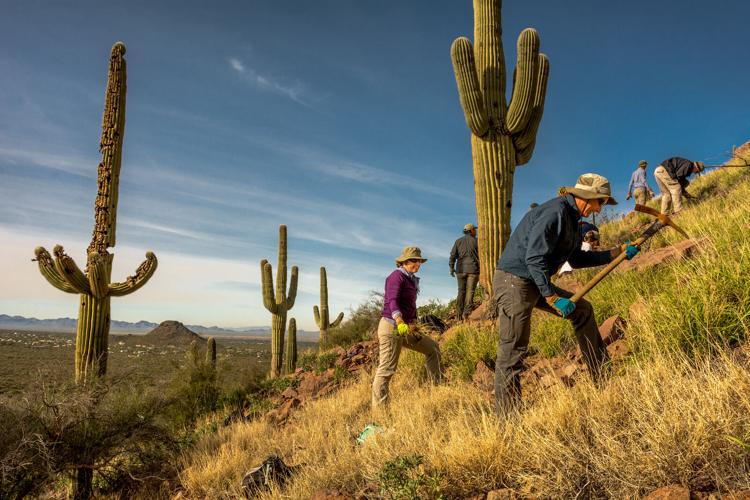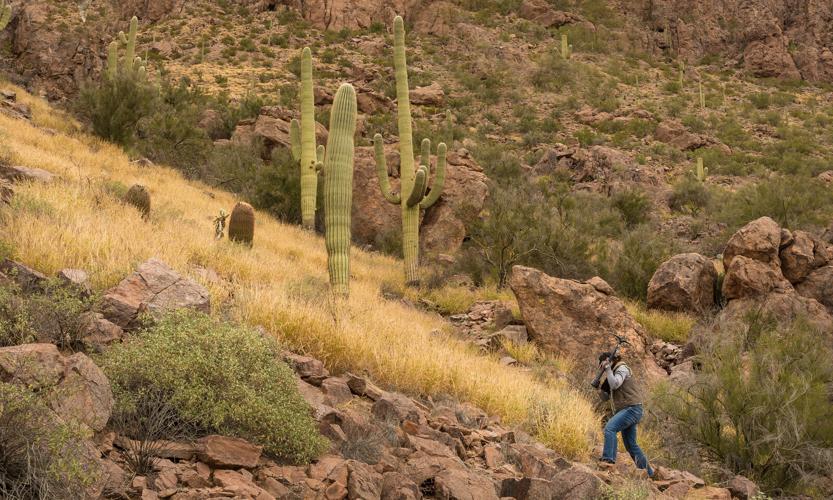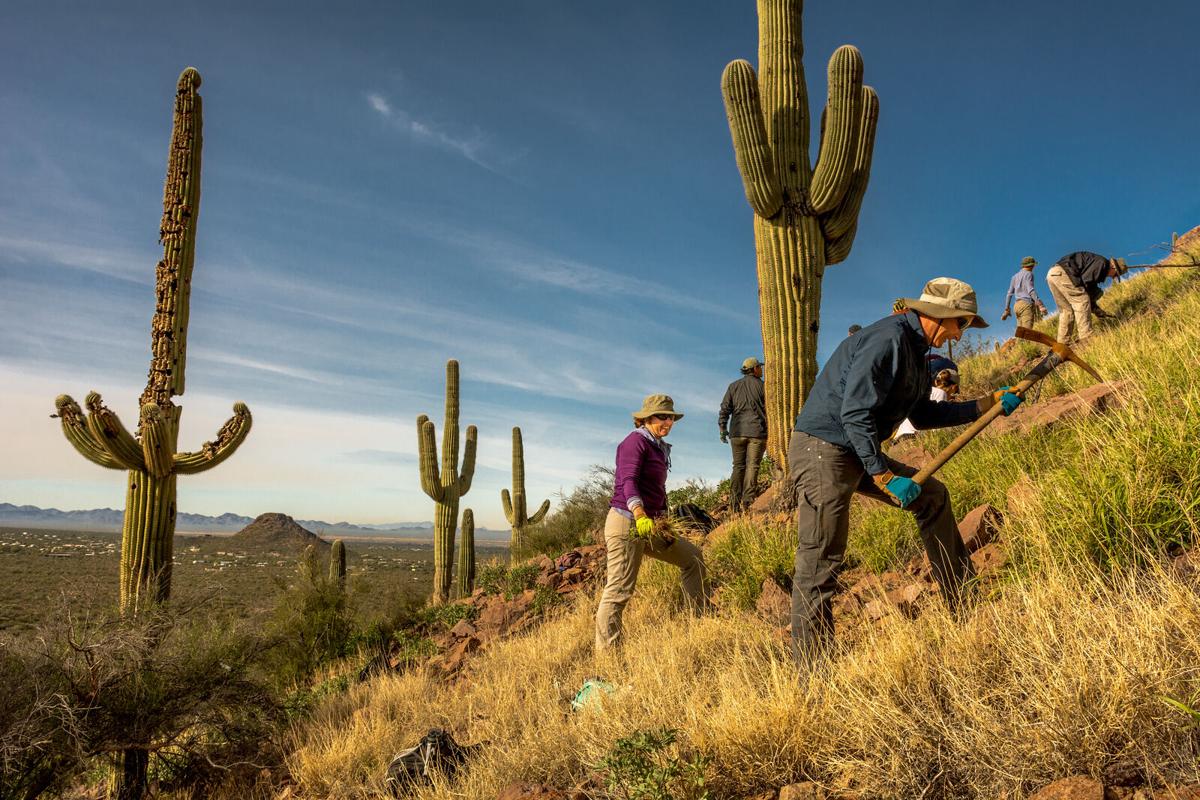Airborne and ground-based herbicide spraying and hand-pulling have shrunk what was once a 5-acre parcel of invasive buffelgrass in Saguaro National Park-West by 50 times over nine years.
On Saturday, a group of volunteers will spend up to four hours tackling the last tenth of an acre of the nonnative weed on a steep slope near Panther Peak at the park’s north end. Even for the extremely hardy buffelgrass, it’s an unusually stubborn patch, whose longevity is attributable to unique weather conditions there, among other factors.
It’s only one of seven buffelgrass removal efforts slated for a wide swath of Sonoran Desert landscapes over the next two weeks — a schedule that shows just how ubiquitous the weed has become.
The fast-growing perennial from Africa and Asia was first introduced to Arizona in the 1930s as hardy ground cover and forage for livestock. It has since exploded into a major threat to the desert ecosystem, by spreading even in dry years to crowd out native plants and fuel once-rare wildfires that are deadly to saguaros, paloverdes and other native plants. It now exists in every major public land preserve in the Tucson area.
Experts now consider it an existential threat to the desert ecosystem, on par with extended drought and climate change.
A deep yellow field of buffelgrass today adorns the remnant patch at Panther Peak, surrounding native saguaros and paloverdes, having filled in bare ground and pushed out other native plants, said Perry Grissom, a Saguaro National Park restoration ecologist.
“As a general rule in the park’s Tucson Mountain District, it takes three years to get (buffelgrass) under control. In that one it’s been different. We kept missing the seed” in past removal actions, Grissom said.
One reason that area’s buffelgrass is so hardy is that the soils are different from elsewhere in the park, he said. The slope there is also very steep, and “in the winter the sun is at a perfect angle to warm it up.”
“That’s why we get more germination than anywhere else. It seems like the weather is different there. It will rain there when it doesn’t rain anywhere else. It will skip there when it doesn’t skip anywhere else,” Grissom said.
At the same time, the buffelgrass’ roots are fairly shallow there, requiring volunteers to pull only two to three inches deep of the weeds, Grissom said.
The National Park Service paid an agricultural contractor to spray the area aerially with the herbicide glyphosate in 2014, 2015 and 2017. Manual removal started in 2018. Park Service staff has applied the herbicide on the ground and and volunteers have used tools to pull buffelgrass every year since then, he said.
“The seeds live for like five years in the soil. We’re killing the adults but the seedlings just erupt in the next monsoon,” Grissom said. “It’s so warm they’ve been germinating a lot in the spring. We keep missing them. In the past, I think, maybe once or twice, we sprayed in the winter. It would rain. We would go back, and then it’s too dry to spray.”

Digging up and pulling buffelgrass in Saguaro National Park in 2018.
Now, with such a small amount of buffelgrass left, “we’re getting kind of close to a knockout punch on this slope,” Grissom said, adding that he thinks it will take a couple years more to remove it all.
But even then, “it will take maintenance of the grass forever. There is buffelgrass seed still around. We hope to get it to the point where you only need a couple of people pulling them in the winter.”
Overall, “it’s here to stay,” he said.
The 45-minute hike to Saturday’s buffelgrass removal site is off-trail.
But if you volunteer, “not only will you spend time in one of the prettiest desert landscapes on earth, you may win a saguaro cactus for your yard,” organizers of the event say.
The Pima County Department of Natural Resources, Parks and Recreation donated a little saguaro in a one-gallon container that will be raffled off that day.
For more information, including driving directions to the area, contact trip leader Frank Staub at 520-260-1400, or fjstaub@hotmail.com.
Buffelgrass isn't the only weed causing trouble in Tucson. Video by Henry Brean/Arizona Daily Star
Photos: Saguaro National Park through the years
Saguaro National Park
Updated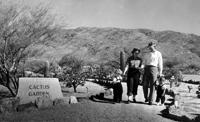
The Saguaro National Monument cactus garden in 1955.
Saguaro National Park
Updated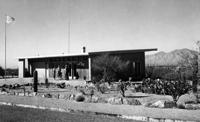
The Saguaro National Monument visitors center in 1955.
Saguaro National Park
Updated
The Saguaro National Monument visitors center in 1955.
Saguaro National Park
Updated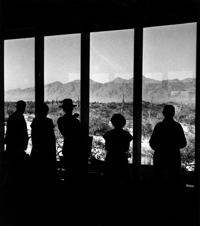
The Saguaro National Monument visitors center in 1955.
Saguaro National Park
Updated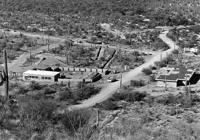
The Saguaro National Monument West visitors center, left, with two rangers' apartments under construction in 1966.
Saguaro National Park
Updated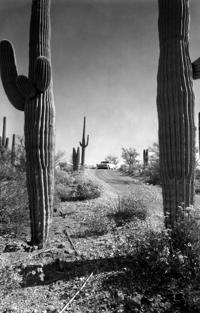
Saguaro National Monument East unit loop drive in 1958.
Saguaro National Park
Updated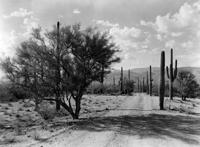
Saguaro National Monument East, ca 1950s.
Saguaro National Park
Updated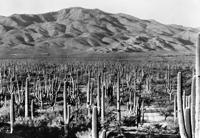
Saguaro National Monument in 1935.
Saguaro National Park
Updated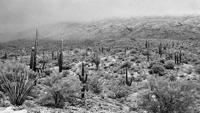
Snow at Saguaro National Park East (then called Saguaro National Monument) on Dec. 23, 1965.
Saguaro National Park
Updated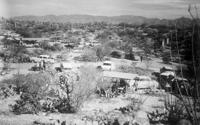
Undated photo (probably 1950s) of tourists enjoying picnics and hiking at Saguaro National Monument.
Saguaro National Park
Updated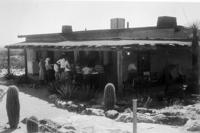
Saguaro National Monument visitors center ca 1940s.
Saguaro National Park
Updated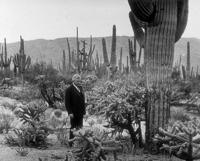
Home Shantz, a plant scientist and president of the University of Arizona in the 1920s, was instrumental in establishing Saguaro National Monument in 1933.
Saguaro National Park
Updated
Panorama of cactus forest in Saguaro National Monument, 1931.
Saguaro National Park
Updated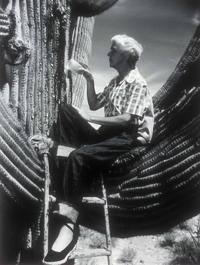
Dr. Alice Boyle applies Penicillin to a Saguaro cactus at Saguaro National Monument. Dr. Boyle’s studies of saguaros included treatments with penicillin that were somewhat successful. Later research showed that the loss of old saguaros was a result of age and periodic freezes, not a “blight”!
Saguaro National Park
Updated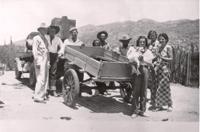
The Freeman family in Saguaro National Monument in 1936.
Saguaro National Park
Updated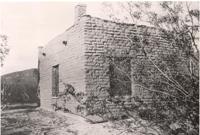
Freeman's adobe home in Saguaro National Monument in 1934.
Saguaro National Park
Updated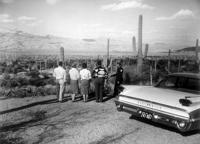
A park ranger with visitors on the loop drive in Saguaro National Monument in 1961.
Saguaro National Park
Updated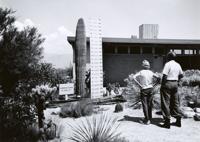
Centennial Saguaro cactus outside the Saguaro National Monument visitors center.
Saguaro National Park
Updated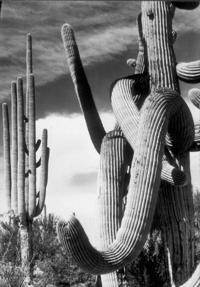
Saguaro National Monument cactus
Saguaro National Park
Updated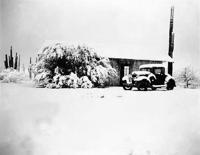
Snow storm in Saguaro National Monument in 1937.
Saguaro National Park
Updated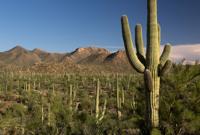
A view looking south from Signal hill at the Tucson Mountain Range in Saguaro National Park, Tucson Mountain District in 2016.
Saguaro National Park
Updated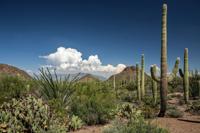
A view looking east from Saguaro National Park, along Picture Rocks Road in the Tucson Mountain District in August, 2016. In the distance, cloud rise over the Santa Catalina Mountains.
Saguaro National Park
Updated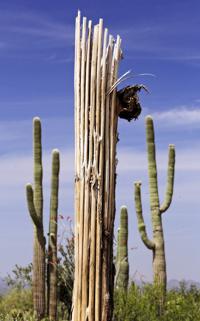
A Saguaro carcass framed at the Saguaro National Park, West, The Tucson Mountain District (TMD) in 2015.
Saguaro National Park
Updated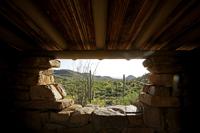
A southerly view out the window of a picnic shelter built by the Civilian Conservation Corps in the 1930s that was built with surrounding rock in the Ez-Kim-In-Zin Picnic Area at the Saguaro National Park, West, The Tucson Mountain District (TMD) in 2015.
Saguaro National Park
Updated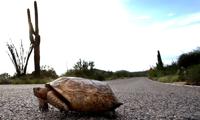
A desert tortoise makes its way down Kinney Rd. in the Saguaro National Park West, Wednesday, August 10, 2016, Tucson, Ariz. Kelly Presnell / Arizona Daily Star
Saguaro National Park
Updated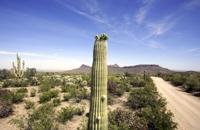
A Saguaro cactus off Golden Gate Rd. holds a top full of flower buds at the Saguaro National Park, West, The Tucson Mountain District (TMD) in 2015.
Saguaro National Park
Updated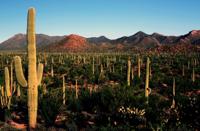
A view looking south from Signal hill towards Wasson and Amole Peaks from left in Saguaro National Park, Tucson Mountain District in August, 2016.
Saguaro National Park
Updated
Visitors take a look at trail maps on the patio of the Red Hill Visitor Center at the Saguaro National Park, West, The Tucson Mountain District (TMD) in 2015.
Saguaro National Park
Updated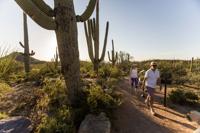
Visitors from Denver stroll one of the many trails off Golden Gate Rd. at the Saguaro National Park, West, The Tucson Mountain District (TMD) in 2015.
Saguaro National Park
Updated
Panoramic view from Spud Rock, including the city of Tucson, from six images, ranging from southeast at left to northeast at right, near Mica Mountain on the western slopes of the Rincon Mountains in the Saguaro National Park on June 2, 2016.
Saguaro National Park
Updated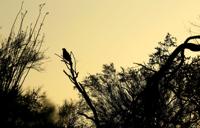
A hawk watches from his perch at the Saguaro National Park, West, The Tucson Mountain District (TMD) in 2015.
Saguaro National Park
Updated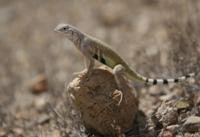
A zebra-tailed lizard (Callisaurus draconoides) perches on a rock near the Signal Hill Picnic Area at the Saguaro National Park, West, The Tucson Mountain District (TMD) in 2015.
Saguaro National Park
Updated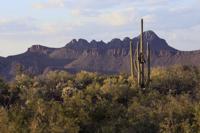
Panther and Safford Peaks in the Tucson Mountains North of Saguaro National Park, West, The Tucson Mountain District (TMD) in 2015.
Ha:san Bak, Saguaro cactus fruit harvest
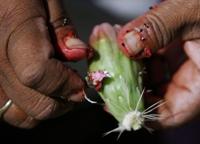
Stella Tucker uses the sharp edge of a stem of a Saguaro fruit to slice the husk to get to the sweet meat inside as she harvests the fruit in the Saguaro National Park in 2005.
Ha:san Bak, Saguaro cactus fruit harvest
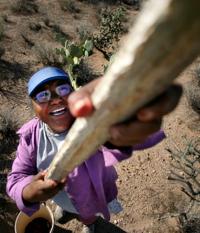
Stella Tucker uses a kuipaD to harvest saguaro fruit in the Saguaro National Park 2005. During the early summer Tucker camps out in the park to harvest and cook the fruit just as her Tohono O'odham ancestors did. Tucker died in 2019 at age 71.
Ha:san Bak, Saguaro cactus fruit harvest
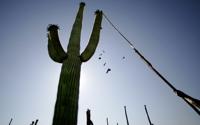
Bob Martens uses a kuipaD, lengths of Saguaro ribs topped by a small limb of creosote, to knock down ripe Saguaro cactus fruit as he helps Stella Tucker during the Tohono O'Odham harvest at Saguaro National Park in 2005.
Ha:san Bak, Saguaro cactus fruit harvest
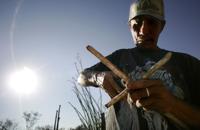
Under the early morning sun, Jerry Yellowhair strengthens the joint where a small creosote branch is attached to a length of Saguaro rib to make a kuipaD, used to reach the Saguaro fruit.
Saguaro National Park
Updated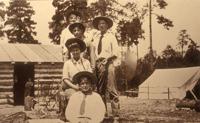
1907: Prominent Tucsonan Levi Manning and his family spent the summer at a get-away log cabin high in the Rincon Mountains.
Saguaro National Park
Updated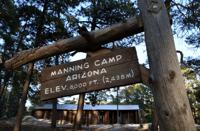
Manning Camp in the Saguaro National Park East, in 2016.
Saguaro National Park
Updated
Some of the pots, pans and iron skillets used by the staff during their stays at Manning Camp in the Saguaro National Park on June 2, 2016.
Saguaro National Park
Updated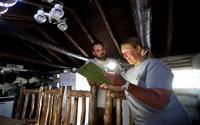
Next generation ranger Ryan Summers, left, and wilderness ranger Shannon McCloskey look over the camps visitors log shortly after arriving at Manning Camp 8,000 feet above sea level in the Saguaro National Park, on June 2, 2016.
Saguaro National Park
Updated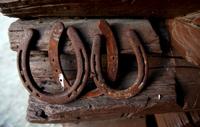
Horse shoes on one of the logs making a wall in the cabin at Manning Camp in the Saguaro National Park on June 2, 2016.
Saguaro National Park
Updated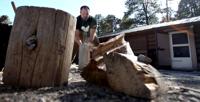
Next generation ranger Ryan Summers splits wood for the evening's fire at Manning Camp in the Saguaro National Park on June 2, 2016.
Saguaro National Park
Updated
The view east over Reef Rock, lower left, from Rincon Mountains near Manning Camp in Saguaro National Park, June 2, 2016
Saguaro National Park
Updated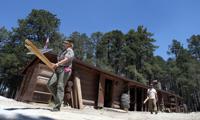
Wilderness ranger Shannon McCloskey, left, and next generation ranger Ryan Summers prepare to do some upgrades to the facilites at Manning Camp in the Saguaro National Park on June 2, 2016.
Saguaro National Park
Updated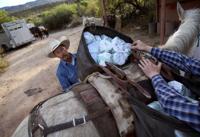
Sid Kahla, left, and Thor Peterson get a pannier balanced on Goose while packing seven mules for a resupply of Manning Camp ranger station in 2016.
Saguaro National Park
Updated
Saguaro National Park trails supervisor Nick Huck, left, and chief of maintenance Jeremy Curtis split up a box of paper towels, distributing the weight evenly among the panniers while preparing for a pack mule resupply of Manning Camp on April 14, 2016. Seven mules were in the supply train and each mule can carry between 100 and 120 pounds.
Saguaro National Park
Updated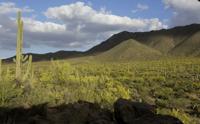
Wasson and Amole Peaks at the Saguaro National Park, West, The Tucson Mountain District (TMD) in 2015.
Saguaro National Park
Updated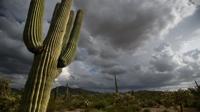
Monsoon clouds gather over the cactus forest in the Saguaro National Park West, Wednesday, August 10, 2016, Tucson, Ariz. Kelly Presnell / Arizona Daily Star
Saguaro National Park
Updated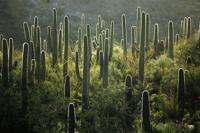
Saguaro cacti backlit by western sun at the Saguaro National Park, West, The Tucson Mountain District (TMD) in 2015.
Saguaro National Park
Updated
A horizontal sliver of sun catches a stretch of cactus in front of the Rincon Mountains just off the Mica View Trail in Saguaro National Park East, Friday, August 12, 2016, Tucson, Ariz. Kelly Presnell / Arizona Daily Star
Saguaro National Park
Updated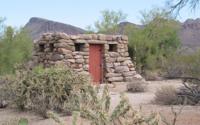
This old stone building was constructed in the 1930's by the Civilian Conservation Corps at the Cam-Boh Picnic Area at Saguaro National Park West.
Saguaro National Park
Updated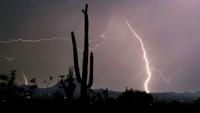
In the aftermath of an evening summer storm, lightning arcs through the night skies over the Saguaro National Park West in 2012.
Saguaro National Park
Updated
Saguaro National Park trails supervisor Nick Huck, left, and chief of maintenance Jeremy Curtis split up a box of paper towels, distributing the weight evenly among the panniers while preparing for a pack mule resupply of Manning Camp on April 14, 2016. Seven mules were in the supply train and each mule can carry between 100 and 120 pounds.
Saguaro National Park
Updated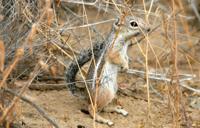
A Harris' antelope squirrel, a year-round resident of the Sonoran Desert, comes out of from under a bush for a look-see near the Golden Gate Road at the Tucson Mountain District of the Saguaro National Park in 2010.
Saguaro National Park
Updated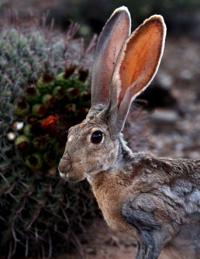
A jack rabbit munches on some greens near the Broadway Trial Head at Saguaro National Park Rincon Mountain District in 2015.
Saguaro National Park
Updated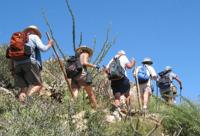
Hikers in Saguaro National Park, like these on the King Canyon Trail in the park's unit west of Tucson, can pay park entrance fees at trailheads using a smartphone.
Saguaro National Park
Updated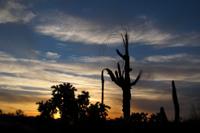
Loop of connected trails at Saguaro National Park East, made up Shantz, Pink Hill, Loma Verde, Cholla and Cactus Forest trails in 2012.
Saguaro National Park
Updated
From atop an outcropping under the Rincon Mountains, Next Generation Ranger Ryan Summers points out the ancient fault line that shifted and formed the Tucson valley to a group of visitors during a geology tour of Saguaro National Park East on April 26, 2016.
Saguaro National Park
Updated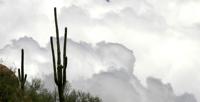
Saguaros stand on a ridge line as massive storm clouds drift in the distance along the Hohokam Road at the Tucson Mountain District of the Saguaro National Park in 2010.
Saguaro National Park
Updated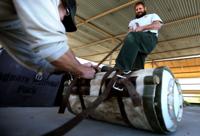
Chief of maintenance Jeremy Curtis gets the strap as tight as possible with the help of trail supervisor Nick Huck while preparing a 70+pound propane tank for a pack mule resupply of Manning Camp in the Saguaro National Park, Rincon District on April 14, 2016.
Saguaro National Park
Updated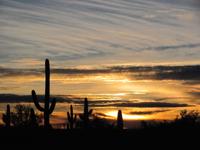
Saguaro National Park ─ Sunset can be a colorful time along a network of trails near the eastern end of Broadway.
Saguaro National Park
Updated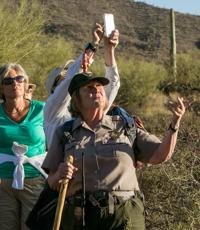
Ranger Donna Gill points out cactus flowers and birds during the Twilight Glow to Moon Shadows hike on the Sendero Esperanza Trail at Saguaro National Park West in April, 2016.
Saguaro National Park
Updated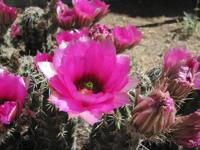
Hedgehog cacti are in brilliant fuchsia bloom at many sites around Tucson from Sabino Canyon to Tucson Mountain Park and Saguaro National Park in 2015.
Saguaro National Park
Updated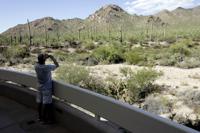
Russell Jones takes a picture at the Saguaro National Park West Red Hills Visitor Center in 2009.
Saguaro National Park
Updated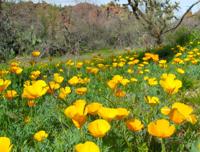
Poppies were blooming profusely at Saguaro National Park West on February 23, 2015
Saguaro National Park
Updated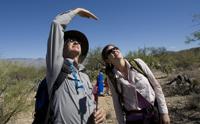
Mike Ward of Saguaro National Park, left, and volunteer LaDeana Jeane observe a Saguaro cactus while conducting a census at the east section of Saguaro National Park in 2009.
Saguaro National Park
Updated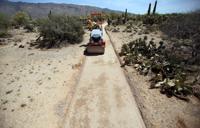
Gavin Youngstrum drives a roller along the bed of the new Mica Springs Trail, work which will make it ADA compliant in Saguaro National Park East on April 22, 2016, Tucson, Ariz. Power tools and motorized equipment is used very rarely in the park. The trail is not in a wilderness area so the prohibition on the use of power tools and machinery doesn't apply.
Saguaro National Park
Updated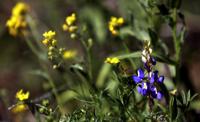
A blue Arizona lupine mixed in with a handful of yellow bladderpod along the Ringtail Trail in Saguaro National Park Tucson Mountain District in 2013.
Saguaro National Park
Updated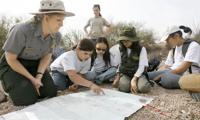
Park Ranger Ann Gonzalez watches the campers in her group as they go over a map during Junior Ranger Wilderness Day Camp at the Saguaro National Park in 2009.
Saguaro National Park
Updated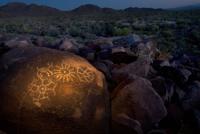
Petroglyphs are among the many wonders at Saguaro National Park West.
Saguaro National Park
Updated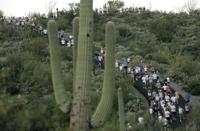
Runners top the first climb as the sun rises at 6:30am, during the annual 8K Saguaro National Park Labor Day Run at Saguaro National Park East in 2007.
Saguaro National Park
Updated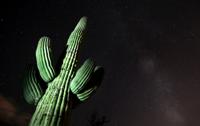
A saguaro under the stars, including a smudge of the Milky Way, at the Broadway Trail Head at Saguaro National Park Rincon Mountain District in 2015.
Saguaro National Park
Updated
Sunset reflected in a mud puddle left over from heavy rains a few days earlier at the Broadway Trail Head of the Saguaro National Park Rincon Mountain District in 2015.
Saguaro National Park
Updated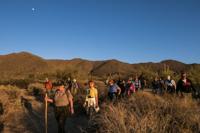
The moon hangs high over Wasson Peak as Ranger Donna Gill leads hikers during the Twilight Glow to Moon Shadows hike on the Sendero Esperanza Trail at Saguaro National Park West in April, 2016.
Saguaro National Park
Updated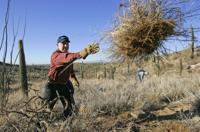
Volunteers help yank out the nonnative, invasive buffelgrass at Saguaro National Park East.
Saguaro National Park
Updated
Using a laser, amateur astronomer Joe Statkevicus points out a few interesting objects in the night sky to Landon George and Vickie Miller at a Saguaro National Park East Star Party in 2010.
Saguaro National Park
Updated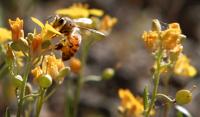
A bee works through a patch of baldderpod in the Saguaro National Park Tucson Mountain District along the Ringtail Trail in 2013.
Saguaro National Park
Updated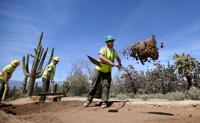
Trail worker Brad Duffe redistributes material as he and his trail crew lay down a bed for a new surface, part of remodeling the Mica Springs Trail to make it ADA compliant in Saguaro National Park East on April 22, 2016.
Saguaro National Park
Updated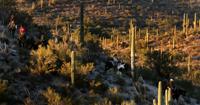
Riders maneuver their mounts down a hillside just north of the Douglas Spring Trail in the Saguaro National Park Rincon Mountain District, Friday Nov. 27, 2015.
Saguaro National Park
Updated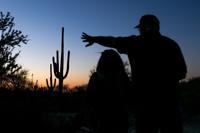
Tim and Connie Phillips, from Salt Lake City, look for photo angles during the Twilight Glow to Moon Shadows hike on the Sendero Esperanza Trail at Saguaro National Park West in April, 2016. The retired couple sold their home and are "following the weather" across the country in their RV.
Saguaro National Park
Updated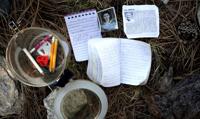
A few items, photos and brief entries in tiny notebooks from an unofficial shrine at Mica Mountain in Saguaro National Park on June 2, 2016.
Saguaro National Park
Updated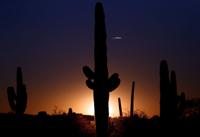
The sun sets over the Saguaro National Park Rincon Mountain District on Oct. 8, 2015.
Saguaro National Park
Updated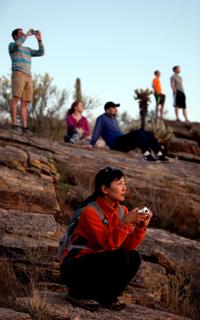
Scarlett Gates and the rest of the tour group watch the last few minutes of daylight from a rock outcropping along the Tanque Verde Ridge Trail during their guided sunset hike in Saguaro National Park East on April 16, 2016.
Saguaro National Park
Updated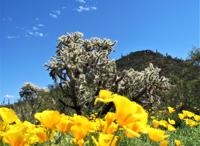
Gold poppies stand out against a backdrop of cacti and blue desert sky at Saguaro National Park west of Tucson on March 11, 2019.
Saguaro National Park
Updated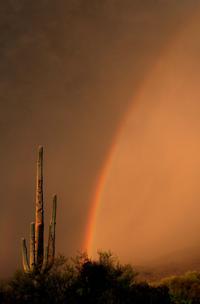
Rainbows pop up over Saguaro National Park East, as the first major monsoon storm of the season begins to roll into the valley, Tucson, Ariz., July 11, 2020.
Saguaro National Park
Updated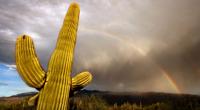
A half rainbow arcs over Saguaro National Park East as a highly localized cell of monsoon rain sweeps through a small band of the eastern valley, Tucson, Ariz., July 28, 2020.
Saguaro National Park
Updated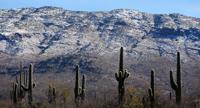
A light coating of snow remains on the Rincon Mountains seen nearby the Broadway Trailhead in Saguaro National Park in Tucson, Ariz. on January 27, 2021.
Saguaro National Park
Updated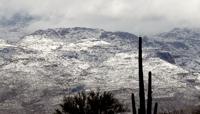
A cactus in the Saguaro National Park East stands in front f the snow in the higher reaches of the Santa Catalinas, Tucson, Ariz., March 13, 2021.
Saguaro National Park
Updated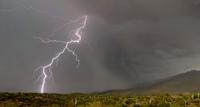
A lighting strikes hits in the Saguaro National Park, east of Tucson, Ariz., July 29, 2021, one of several storm cells that skirted the city.


